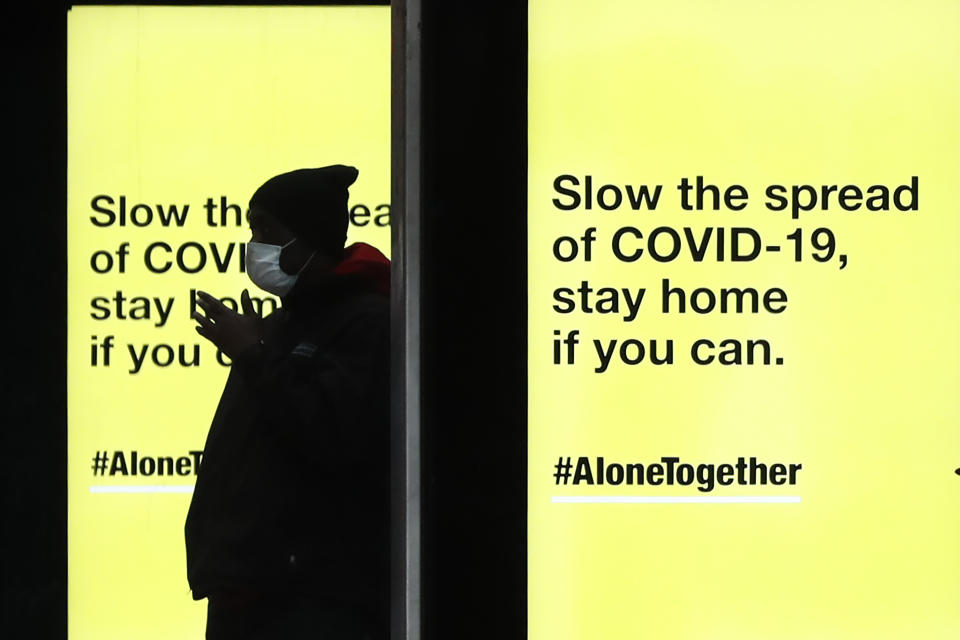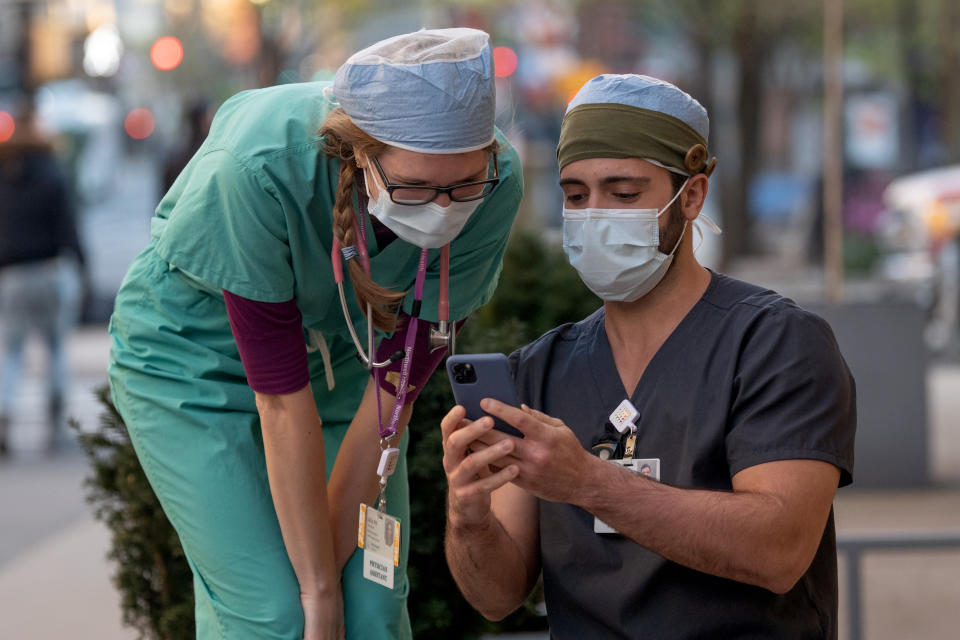What is smartphone contact tracing and how does it work? Tech Support
Welcome to Tech Support, a segment where I, Dan Howley, serve as your intrepid guide through the sometimes confusing, often frustrating, world of personal technology.
Here, I answer all of your most pressing questions about the various gizmos, gadgets, and services you use in your everyday life.
Have a question of your own? Reach me on Twitter at @danielhowley, or email me at [email protected].
Now, on to your questions.
This week's dilemma:
“What is smartphone contact tracing?”
Smartphone contract tracing is a means of quickly notifying people via their phone that they have been in contact with somebody who has an illness such as coronavirus.
Without smartphones, healthcare officials traditionally perform contact tracing by interviewing infected individuals to determine where they’ve traveled and whom they’ve contacted. Health officials then reach out to those individuals so they can quarantine themselves.
But traditional contact tracing requires serious human resources, including workers manning phone lines to reach out to potentially infected people, individuals going door-to-door, etc. According to The New York Times, a nationwide effort would likely require somewhere around 300,000 people. What’s more, this kind of tracing takes time — something authorities can’t afford with a fast-spreading virus.

In place of such a massive workforce, countries around the world have begun to develop and deploy smartphone-based contact tracing systems.
The Chinese government, for instance, uses an app that residents are required to download if they want to use things like shopping malls and public transportation. Singapore, meanwhile, used a voluntary smartphone app called TraceTogether that measures the distance a person’s phone has been from another person’s device using Bluetooth technology. Data is stored locally on users’ phones unless they authorize its upload to the country’s Ministry of Health.
European countries like Germany have sought to have data collected via smartphone apps uploaded to a centralized database that would give the country’s health officials a better understanding of the virus, but at the potential expense of user privacy.
The fear is that governments could use the data gleaned from their centralized contact tracing apps to effectively set up a mass surveillance program. Germany has since abandoned this route.
What is the U.S. using?
A number of proposals for apps in the U.S. would allow for smartphone contact tracing, including one developed by the Massachusetts Institute of Technology. But the most likely candidate for nationwide smartphone contact tracing is the solution put together by Apple (AAPL) and Google (GOOG, GOOGL), which they refer to as an “exposure notification” tool.
The smartphone contact tracing system comes with controversy – user privacy is certainly a concern among some security experts.

The Apple-Google tool will enable our phones to communicate with each other, and alert us if we’ve come into contact with someone with the coronavirus.
Rather than depending on a users’ GPS data, which can identify individuals, the tool will rely on Bluetooth, similar to Singapore’s solution.
Initially, the companies will require users to download an app from an official health authority, but that will change when they provide operating system updates that allow you to activate it without a third-party app.
When activated, and doing so is voluntary, the tool will randomly generate identifier beacons for you and every user accessing the system. When you come into contact with another person using the tool, your devices will exchange these Bluetooth beacons, which are essentially a string of otherwise meaningless numbers that change every 10 to 20 minutes to thwart malicious actors from tracking individuals using the identifiers.
Any identifiers you come in contact with will be saved in a secure portion of your device, and remain there. If you become infected with the coronavirus, you can use your compatible health authority’s app to update your infection status. Your device will then fire off your randomized identifier beacons to a server where they’ll be held for a limited time.
If you’re not infected, your device will download a list of randomized identifier beacons associated with infected users daily. Those beacons will then be compared, on your device, with beacons your phone has come in contact with. If they match up, you’ll receive an alert through your health authority’s app saying you may have been exposed to coronavirus.
Both Apple and Google say this data will be unusable by them, and won’t be monetized. They also say the data associated with the randomized Bluetooth beacons will be encrypted.
Apple and Google won’t be the ones administering the tracing apps, either. Instead, your local health authority will be in charge of that, though the data protections the companies put in place will still be used regardless of the authority.
It’s important to note that this is all voluntary, and Apple and Google say they’ll turn off the service as the pandemic subsides. The companies say only health authorities will be able to interface with the data, and that neither Apple nor Google will have access to it.
Both companies are also making their solutions available in all of their markets, including Germany, which has said it will use the tool.
We’ll find out more about the tracing system when it becomes available this month.
More from Dan:
Apple Q2 2020 earnings will be all about assessing the damage from the coronavirus
Netflix’s billion dollar question: ‘How do you keep people hooked?’
Got a tip? Email Daniel Howley at [email protected] or [email protected], and follow him on Twitter at @DanielHowley.
Follow Yahoo Finance on Twitter, Facebook, Instagram, Flipboard, SmartNews, LinkedIn, YouTube, and reddit

 Yahoo Finance
Yahoo Finance 